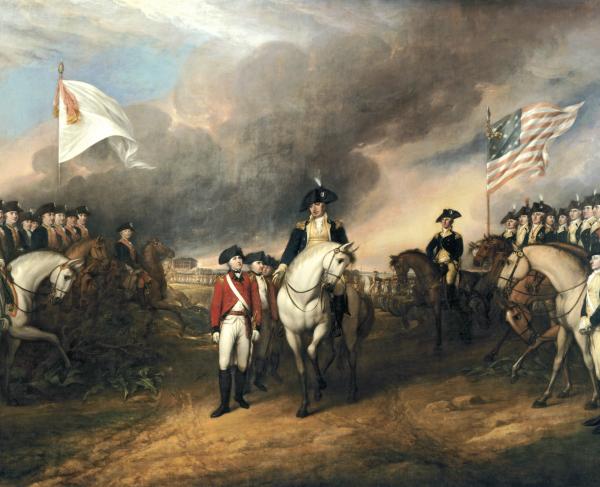Brier Creek

Fought along the river banks of Brier Creek near Sylvania, Georgia, where it merges with the Savannah River the battle of Brier Creek was a British victory on March 3, 1779, in the early stages of the Southern Campaign. Several weeks earlier, Patriot forces had secured a splendid victory at Kettle Creek, near Augusta, raising American morale in the region. The significant number of American casualties undermined the boost in Patriot morale.
The change in British strategy to focus their attention on the war in the South was twofold: to gain the upper hand before France could bring her full weight to bear as American allies and to tap into strong Loyalist sentiment in the region.
Augusta, Georgia, was the first objective for the British, and it fell to British forces on December 29, 1778. British troops dispatched from New York and Saint Augustine in East Florida coordinated with one another to secure Augusta’s capitulation. In January 1779, Brigadier General Augustine Prevost was appointed the British commander of Augusta and began to organize, under the direction of Lieutenant Colonel Archibald Campbell, Loyalist militia units.
After Campbell left Augusta, he learned of the turn of events at Kettle Creek. His attack on Augusta was complete, and he lost only one man in the assault. This loss is surrounded by controversy. One of his regulars sought sanctuary under the warfare terms of “safeguard” in a private home. In Europe, soldiers deemed as ‘safeguards” were deemed off-limits. In this case, the British soldier was killed by American militia, and American commanders refused to press charges. Campbell was outraged. Retribution would soon come.
Campbell pulled his troops back and headed south. When his forces reached Ebenezer, they put the bridge that crossed Brier Creek to the torch there. Campbell then turned command of his detachment over to Lieutenant Colonel Mark Prevost, the younger brother of General Prevost. Campbell made the decision to return to England and left. Hot on the heels of the retiring British were the Americans led by General John Ashe of North Carolina. Upon reaching Ebenezer, he put his men to work repairing the bridge and went into encampment on the banks of Brier Creek. His arrangement of troops was costly and haphazard as they had their backs to the creek and against a swamp.
Before his departure, the younger Prevost and Campbell devised a plan of attack on Ashe’s forces. On March 3, 1779, Ashe’s forces were routed at their encampment as the British executed a flawless attack. They feinted at the bridge site, but swung the bulk of their forces north and west of the bridge. They planned to exploit Ashe’s position, which was arranged in a triangle at the confluence of the creek and the river.
The battle took place on the afternoon of March 3. And Ashe had been warned about the British troops bearing down on his position. Ashe drew his men into battle lines, but his tactics proved fatal once more as the lines were unorganized. Confusion also reigned among the American ranks as cartridge boxes were short and the men had muskets of different calibers. While the American left formed against the creek their right was exposed by a gap as their deployment was shy of reaching the river.
The British three-pronged attack was also supported by light artillery. As the fighting ensued, another gap appeared in American lines in the confusion. British cavalry exploited the gap on the American right and, with the breach, made British Regulars with fixed bayonets plunged into the American lines.
Panic engulfed the Americans who did not have bayonets, and many broke and ran. And a route was underway. Once again, American militia from North Carolina and Georgia failed to perform while the Continental units posted in the center held firm until their position became threatened, and they were forced to surrender as the militiamen melted into the forests and swamps, fleeing for their lives.
It was a stinging defeat for the Americans, who lost both men and material, with casualties close to 400, with a fair number of them drowning in the swamps as they fled. More than 200 of the Continentals were captured. British casualties were light, with only five men killed and eleven wounded. Witnesses claim that Ashe fled on horseback as well, though a court-martial charging him with cowardice found him not guilty. But he was convicted for failing to make his camp secure.
Writing after the war, Patriot leader William Moultrie argued that the American defeat prolonged the war by at least a year and opened the floodgates for a British invasion of the Carolinas.

